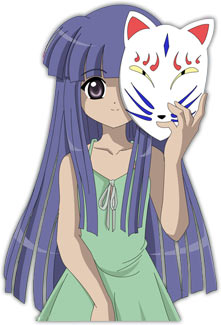Like other languages, Japanese comes in various dialects. Some of these are regional, like “standard” Tokyo speech or the more colorful Osaka-ben (Osaka dialect), while other speech patterns are based on sex, as illustrated by different first and second pronouns for men and women. One interesting aspect of the language is the existence of “fake” dialects which show up in anime or manga but which are never used naturally by any real Japanese person, ever. One of these is ojosama speech, a special way that pampered rich girls like Cerina Iori Flameheart from Ladies Versus Butlers speak to indicate that they’re well-bred. Instead of saying yoroshiku, a casual way of saying “Nice to meet you,” they’ll use the more refined-sounding yoroshiku-teyo, which is no more authentic than a sign advertising Ye Olde Bookshoppe. Then there’s the rough “old man” speech used by almost every elderly male character ever animated, in which the phrase so da (“that is so”) always changes to so ja. (Aside: in Japanese versions of Star Wars, Yoda speaks this standard form of “old man” speech, which is quite a shame considering how much Yoda’s unique dialect to his character adds.) Yet another example of a stylized dialect of Japanese in anime is the “kid speech” of characters like Rika from Higurashi no Naku Koro Ni, who adds nano desu to any sentence, making her sound more feminine and cute. Learning Japanese through anime is a fun way to expose yourself to new vocabulary, but it’s important to realize that the medium does have its limitations.

Anime features many “false” dialects that no one actually speaks, nano desu!














